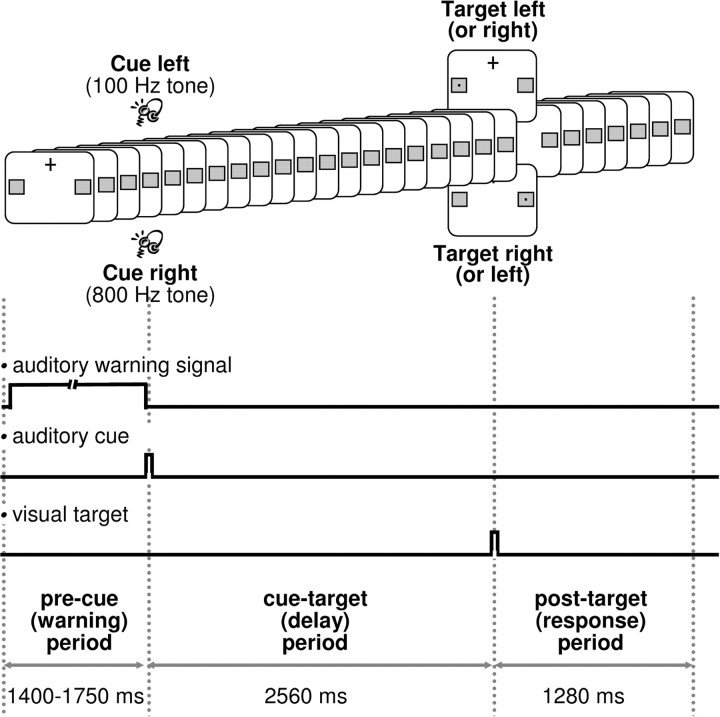Figure 1.
Experimental paradigm and sequence of events during each trial. A central fixation cross and two lateralized gray squares serving as position markers for visuospatial attention orienting were continuously displayed. Each trial was initiated by an auditory warning signal (white noise) of variable length. This was followed by a brief (50 ms) auditory cue instructing subjects to covertly direct their attention either to the left (100 Hz tone) or to the right (800 Hz tone) position marker. After a delay of 2560 ms, a target appeared for 40 ms either in the left or right gray square. Targets were more likely to appear at cued positions (p = 0.66). Subjects were asked to respond to a perceived target by a right-hand button press.

